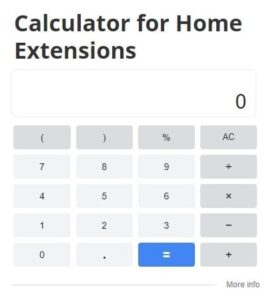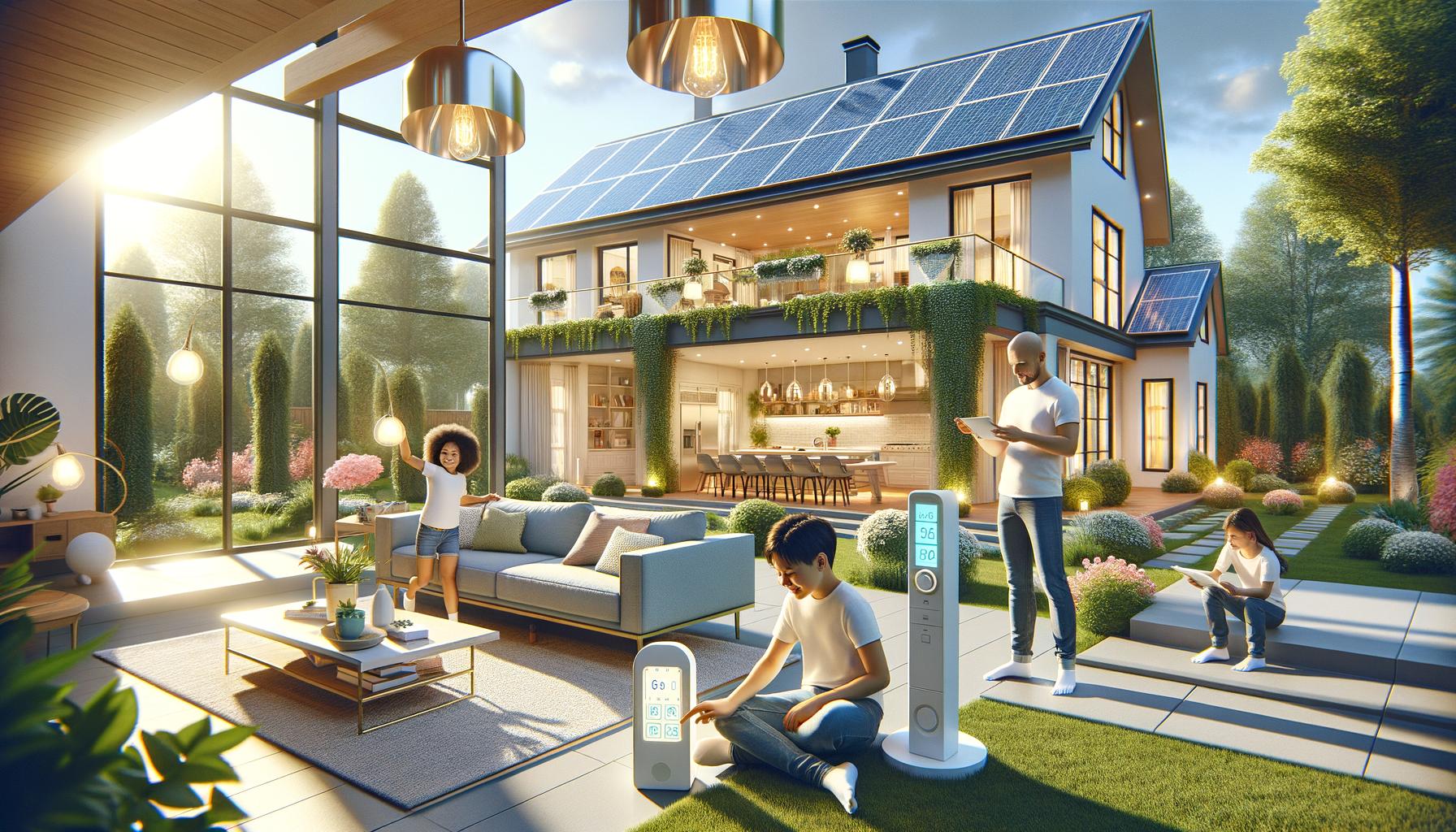
At Home Owners Association, we understand the importance of creating an energy-efficient home.
Rising energy costs and environmental concerns have made it essential for homeowners to adopt smart strategies for reducing their energy consumption.
In this blog post, we’ll explore practical ways to transform your house into an energy-efficient home, from design elements to smart technology and energy-saving appliances.
How to Design an Energy-Efficient Home
At Home Owners Association, we know that the foundation of an energy-efficient home lies in its design. Smart design strategies can significantly reduce your energy consumption and costs. Let’s explore some practical ways to make your home more energy-efficient through design.
Insulation: Your Home’s Thermal Blanket
Proper insulation maintains a comfortable temperature in your home while minimising energy use. The U.S. Department of Energy states that adding insulation to your attic can save you up to 15% on heating and cooling costs. You should focus on insulating your walls, floors, and roof to create a thermal envelope that keeps heat in during winter and out during summer.
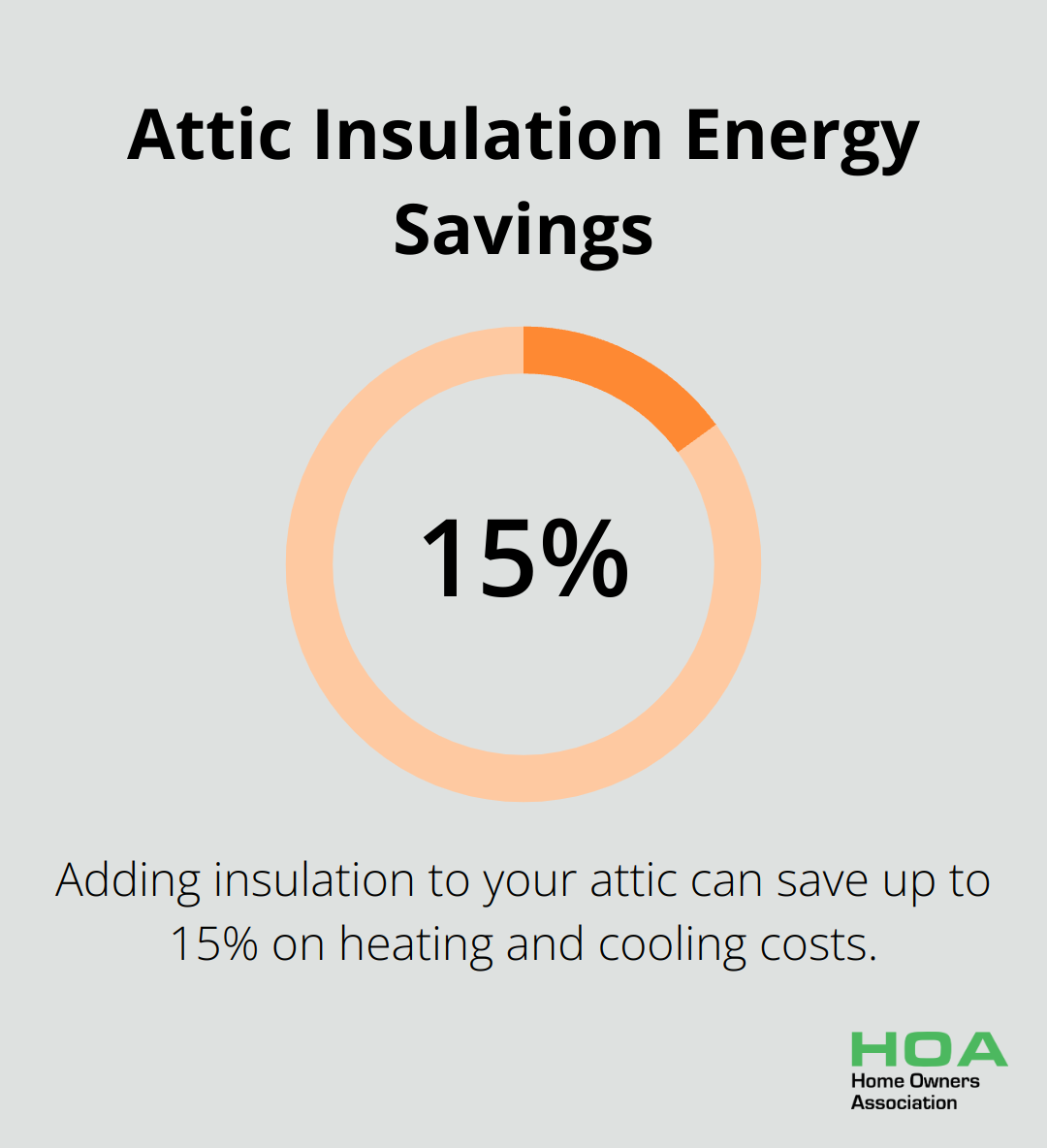
For optimal results, use high-quality insulation materials with a high R-value (which measures thermal resistance). In Australia, the recommended R-value for ceiling insulation ranges from R2.5 to R6, depending on your climate zone. Don’t forget to insulate around windows and doors to prevent draughts.
Windows: More Than Just a View
Strategic window placement can dramatically impact your home’s energy efficiency. North-facing windows in Australia capture maximum sunlight and heat, which reduces heating needs. In summer, you can use external shading devices like awnings or deciduous trees to block excessive heat gain.
You should consider installing double-glazed or low-E windows, which can reduce energy costs significantly while also providing increased comfort inside your home. The initial cost might be higher, but the long-term energy savings make it a worthwhile investment.
Cool Roofs: Your Home’s Shield Against Heat
Cool roofing solutions can significantly reduce your cooling costs, especially in warmer climates. Cool roofs lower urban air temperatures by reducing the amount of heat transferred into buildings.
Light-coloured or reflective roofing materials can reflect up to 80% of the sun’s rays, which keeps your home cooler. For existing roofs, you can apply a reflective coating to achieve similar benefits. These coatings can lower roof surface temperature, which reduces the heat transferred into your home.
These design strategies create a home that naturally maintains a comfortable temperature with minimal energy input. An energy-efficient home design is not just about immediate savings; it’s an investment in long-term comfort and reduced environmental impact.
Now that we’ve covered the design aspects of an energy-efficient home, let’s move on to how smart home technology can further enhance your energy conservation efforts.
How Smart Tech Can Make Your Home Energy Efficient
At Home Owners Association, we’ve witnessed how smart home technology revolutionises energy conservation. These innovative solutions not only increase convenience but also significantly reduce energy consumption and costs.
Smart Thermostats: The Brain of Your HVAC System
Smart thermostats transform energy efficiency. They learn your schedule and preferences, then automatically adjust your home’s temperature for optimal comfort and energy savings. Smart thermostats that earn the ENERGY STAR label have been independently certified to deliver energy savings.
When you select a smart thermostat, look for features like geofencing, which uses your smartphone’s location to adjust the temperature when you leave or return home. Also, consider models that provide detailed energy reports, which help you understand and optimise your usage patterns.
Smart Lighting: Illuminating Savings
Smart lighting solutions offer both convenience and energy savings. LED lights paired with smart controls can reduce your lighting energy use by up to 90% compared to traditional incandescent bulbs.
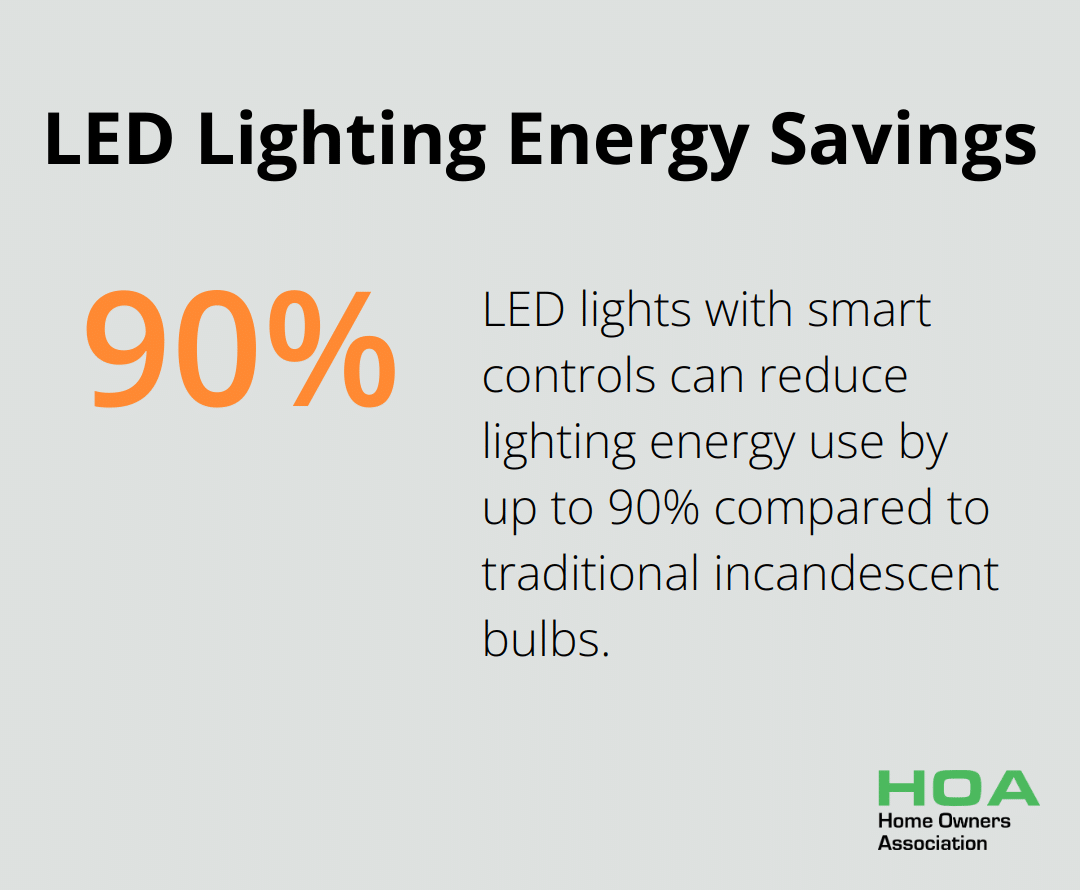
Smart bulbs (such as Philips Hue or LIFX) allow you to control your lights remotely, set schedules, and even change colours. The real energy-saving potential lies in their ability to automatically adjust brightness based on natural light levels or turn off when no one’s in the room.
For larger homes or commercial properties, smart lighting systems can lead to substantial savings. The American Council for an Energy-Efficient Economy found that advanced lighting controls can reduce lighting energy use by an average of 29% in commercial buildings.
Power Management: The Unsung Hero of Energy Efficiency
Smart power strips and energy monitoring devices often go overlooked but can significantly impact your energy consumption. Advanced power strips can significantly cut the amount of electricity used by your home office and entertainment centre.
Energy monitoring devices (like the Sense Home Energy Monitor) can provide real-time data on your energy usage, helping you identify energy hogs and adjust your habits accordingly.
Some homeowners have reported savings of up to 20% on their energy bills after installing comprehensive energy monitoring systems and making data-driven changes to their energy use.
The implementation of these smart technologies can transform your home into an energy-efficient powerhouse. While the initial investment might seem significant, the long-term savings and increased home value make it a smart choice for any homeowner.
Now that we’ve explored how smart technology can enhance your home’s energy efficiency, let’s move on to discuss energy-saving appliances and fixtures that can further reduce your energy consumption.
Choosing Energy-Efficient Appliances and Fixtures
At Home Owners Association, we understand the impact of selecting the right appliances and fixtures on your home’s energy consumption. This chapter explores how you can make smart choices to reduce your energy bills and environmental footprint.
ENERGY STAR Appliances: The Gold Standard
ENERGY STAR certified appliances represent the gold standard for energy efficiency. These appliances are 10-50% more efficient than their non-rated counterparts. When you shop for new appliances, always look for the star ratings and compare running costs.
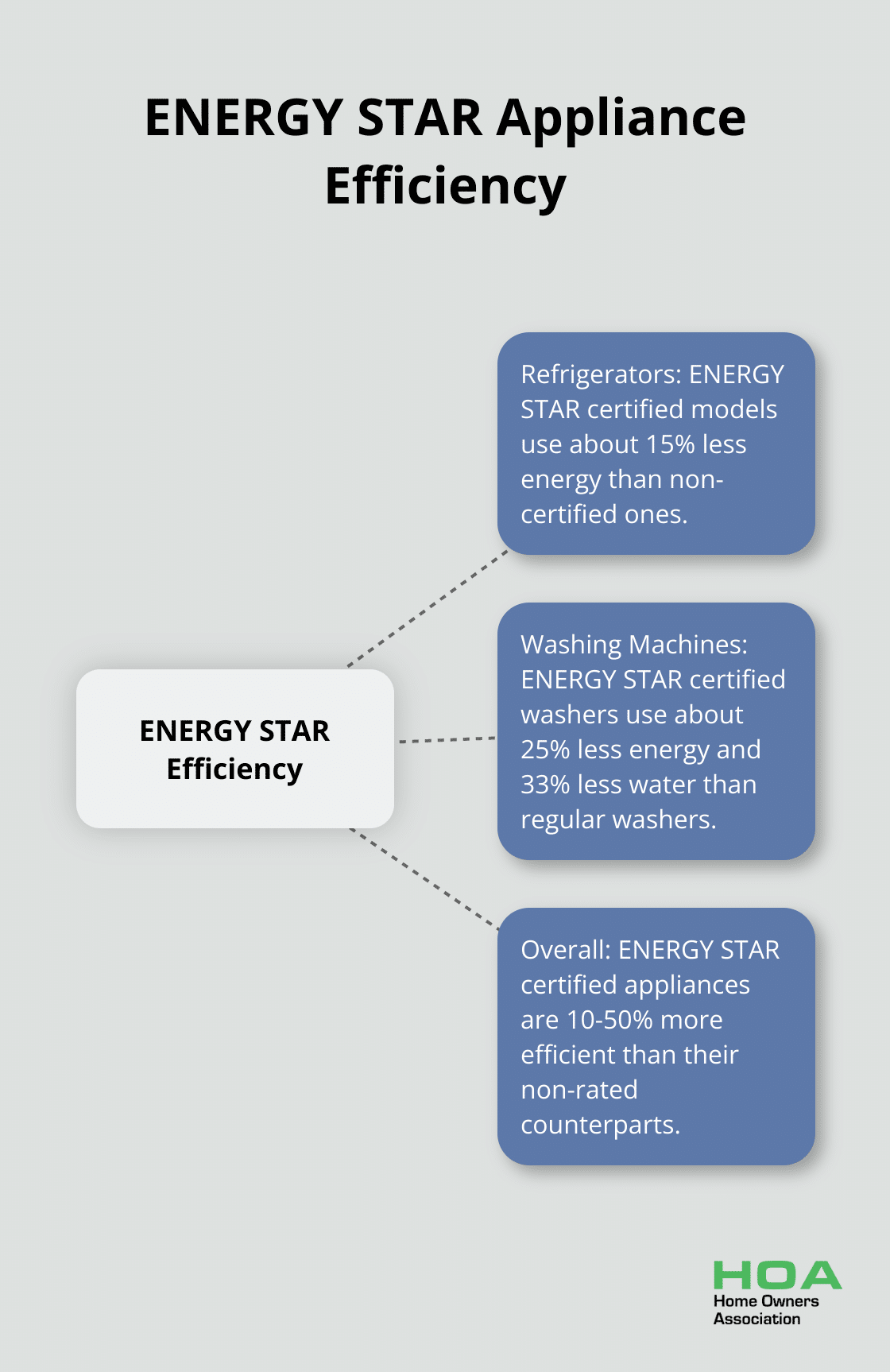
An ENERGY STAR certified washing machine uses about 25% less energy and 33% less water than regular washers. This can save you hundreds of dollars in energy and water costs over the appliance’s lifetime.
Refrigerators often consume the most energy in a home. An ENERGY STAR certified refrigerator uses about 15% less energy than non-certified models, which can translate to about $80 in savings over its lifetime.
Water-Saving Fixtures: Every Drop Counts
Low-flow water fixtures offer a simple yet effective way to reduce both water and energy consumption. You can significantly cut your water usage without sacrificing comfort by installing low-flow showerheads, faucet aerators, and dual-flush toilets.
A standard showerhead uses about 2.5 gallons of water per minute, while a low-flow model uses no more than 2 gallons per minute. This small difference can save a family of four up to 2,900 gallons of water per year. Less hot water usage also means less energy needed to heat that water, resulting in lower energy bills.
Dual-flush toilets offer two flush options – one for liquid waste and another for solid waste. These toilets can reduce water consumption by up to 67% compared to standard models, saving thousands of gallons of water annually.
LED Lighting: Bright Ideas for Energy Savings
LED lights revolutionise home lighting. Residential LEDs use at least 75% less energy, and last up to 25 times longer, than incandescent lighting. While the upfront cost might be higher, the long-term savings prove substantial.
A typical LED bulb uses only 6-8 watts while providing the same amount of light as a 60-watt incandescent bulb. Over its lifetime, a single LED bulb can save you $80 in electricity costs.
When you choose LED bulbs, pay attention to the colour temperature. Warm white (2700-3000K) works best for living areas and bedrooms, while cool white (3500-4100K) suits kitchens and workspaces well.
Smart Power Management
Smart power strips and energy monitoring devices can significantly impact your energy consumption. Advanced power strips can cut the amount of electricity used by your home office and entertainment centre.
Energy monitoring devices provide real-time data on your energy usage, helping you identify energy hogs and adjust your habits accordingly. Some homeowners report savings of up to 20% on their energy bills after installing comprehensive energy monitoring systems and making data-driven changes to their energy use.
Final Thoughts
Creating an energy-efficient home combines smart design, innovative technology, and conscious appliance choices. You will enjoy increased comfort, improved indoor air quality, and reduced environmental impact with these improvements. Your property value will increase, making your home more attractive to potential buyers while contributing to a more sustainable future.
We recommend you start with an energy audit to identify areas for improvement in your home. You should prioritise upgrades based on potential impact and your budget (even small changes can lead to substantial savings over time). Consider reaching out to Home Owners Association for expert guidance and access to trade pricing on materials for your energy-efficient home projects.
Our wealth of resources and personalised support will equip you to make informed decisions and achieve your energy efficiency goals. You will invest in a more comfortable, cost-effective, and sustainable home for tomorrow when you take action today. Your energy-efficient home journey starts now, and we are here to support you every step of the way.





